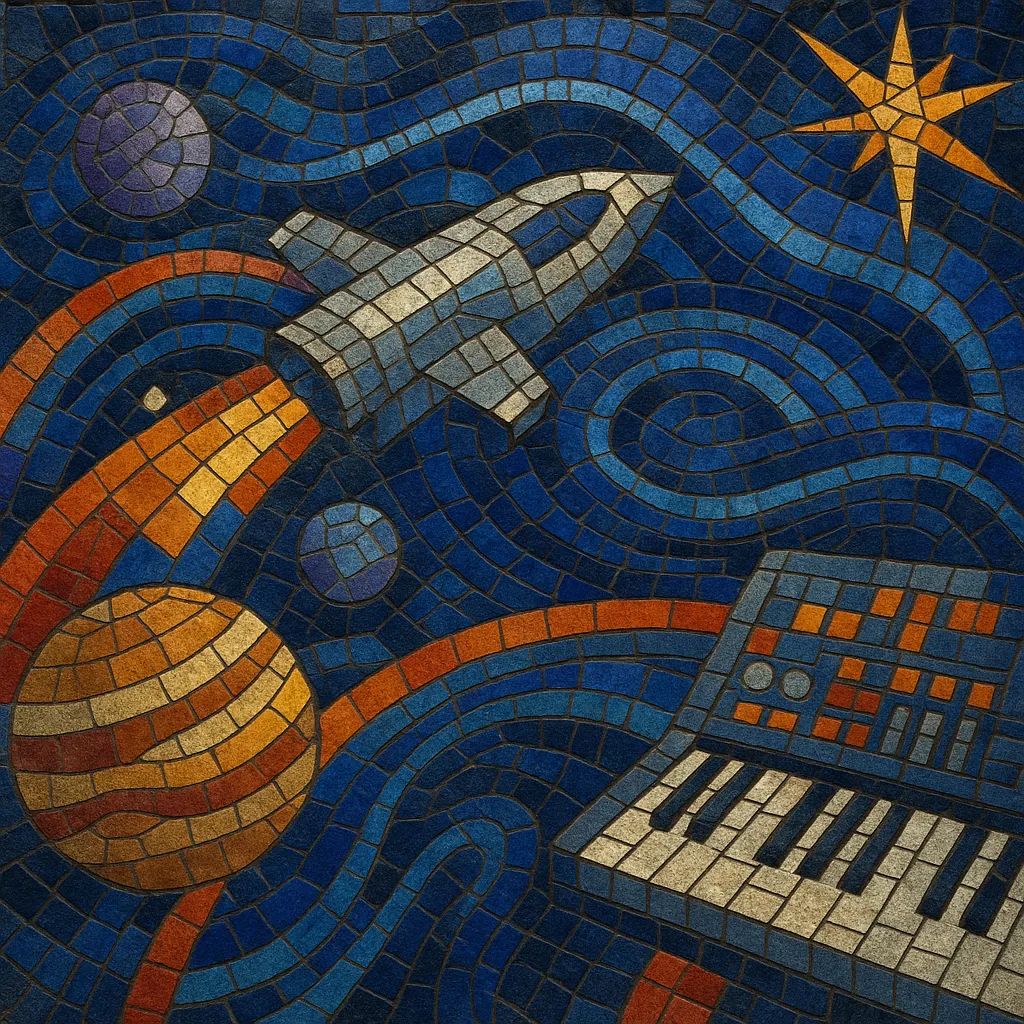
Spacesynth is an instrumental, melody‑driven branch of 1980s European dance music that fuses Italo‑disco rhythm sections with futuristic, sci‑fi atmospheres. It is marked by sweeping analog pads, soaring lead themes, arpeggiated bass lines, and abundant space‑themed effects (risers, whooshes, lasers), typically set to a steady four‑on‑the‑floor groove around 110–125 BPM.
While it inherits glittering textures from late‑’70s space disco, spacesynth tightens the sequencing, emphasizes dramatic motif development, and foregrounds catchy, virtuosic synth leads over vocals. The result is a cinematic, retro‑futurist sound that feels both danceable and evocative of cosmic exploration.
Spacesynth emerged in continental Europe as Italo‑disco producers began crafting fully instrumental, sci‑fi themed singles. Italian acts like Koto on the Memory Records scene set early templates with tightly sequenced bass lines, minor‑key hooks, and space‑oriented artwork and titles. In parallel, the heritage of 1970s space disco (e.g., cosmic imagery, lush pads) carried forward into a more computerized, arpeggio‑centric aesthetic.
The Netherlands became the style’s main engine when Laserdance—spearheaded by Erik van Vliet and Michiel van der Kuy—standardized the formula: powerful four‑on‑the‑floor beats, octave‑jumping bass arps, memorable lead melodies, and grand, cosmic breakdowns. Projects like Proxyon and Rygar further cemented the sound. Singles and albums circulated widely across European labels, defining a recognizable, instrumental dance music that felt cinematic and futuristic.
As eurodance, techno, and trance took over mainstream dance floors, spacesynth receded into a cult niche. Nevertheless, collectors and dedicated producers maintained small scenes in the Netherlands, Italy, Central/Eastern Europe, and Scandinavia. The style’s hardware DNA (analog polysynths, early digital synths, drum machines) preserved its distinct character.
The internet enabled a robust revival: specialized forums, netlabels, and compilation series connected veteran producers with new generations. Modern artists adopted DAWs and virtual instruments while honoring classic arrangement tropes and sound design. The genre now overlaps with retro‑inspired movements and continues to inspire synth‑centric electronic producers seeking a melodic, space‑age narrative.

